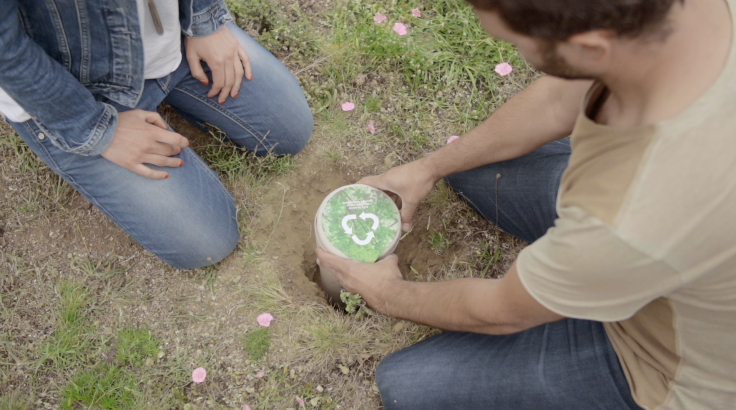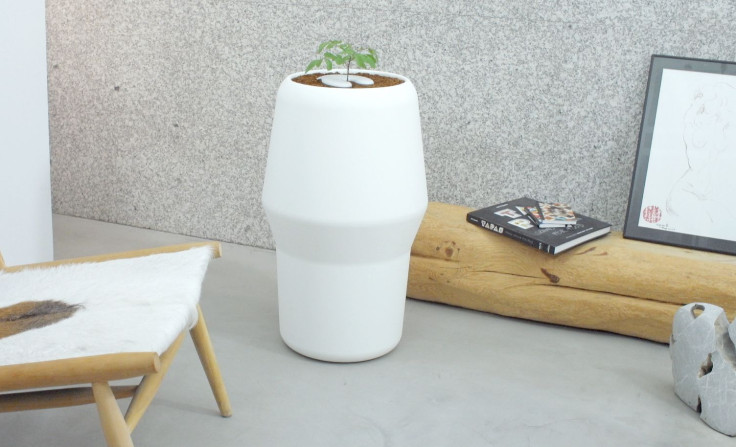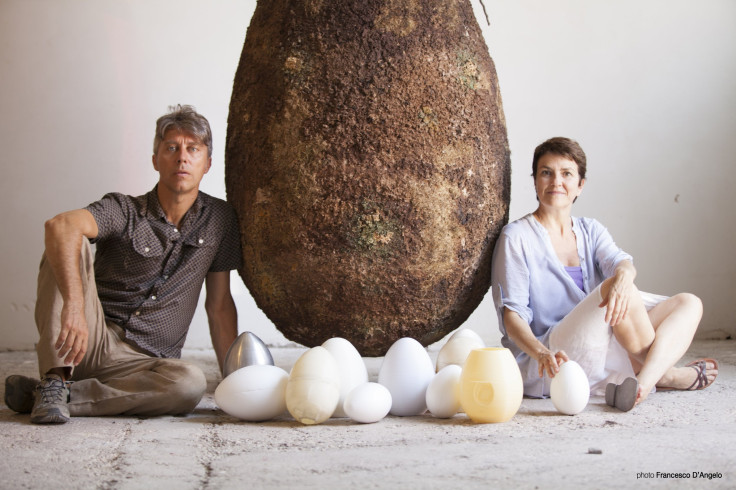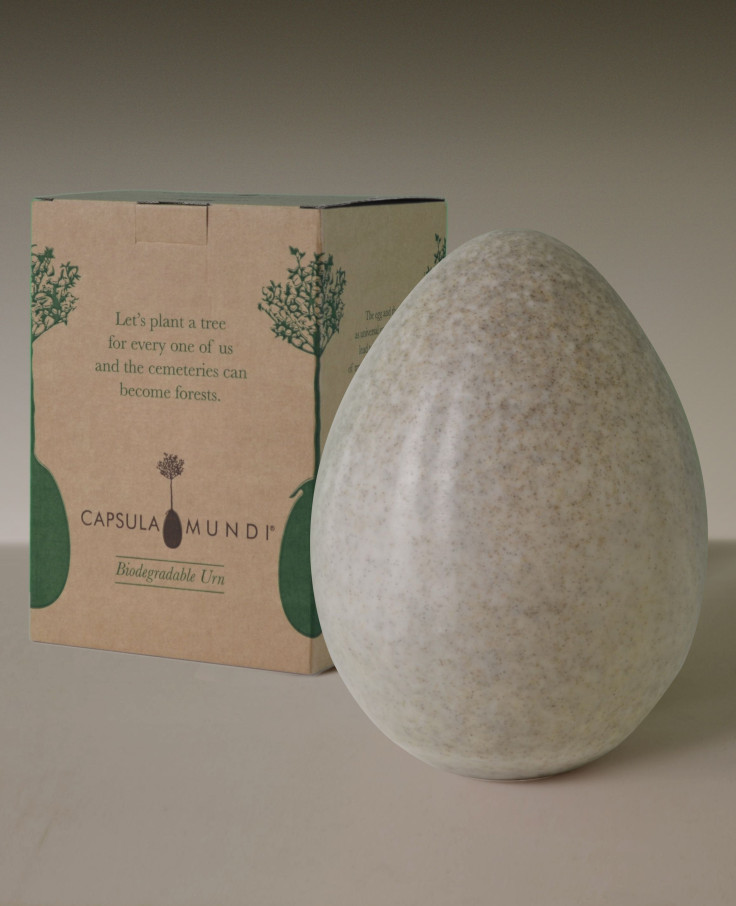Life After Death? Eco-Friendly Funeral Companies Will Help You Become A Tree

Whether it be the rising costs of funerals, cemeteries filling up or a need to do something that isn't viewed as traditional, many people are searching for new ways to honor loved ones after death. These days people are arranging to have their ashes repurposed into synthetic diamonds, pencils, hourglasses or even shot into space at fireworks displays.
The options are seemingly endless, but perhaps one of the most natural options is the burial or spreading of ashes with organic matter where a tree or plant can then grow with the remains. Companies like Bios Urn are focusing on just that, to help people return their bodies to organic matter and create something beautiful and lasting in the process.
Read: 5 Of The Most Famous Tombs, Burial Sites In The World
The idea for the Bios Urn, a biodegradable urn for ashes, planted itself in founder and designer Gerard Moliné’s mind when he was just a boy. One day he and his grandmother came upon a dead bird while gardening. She buried the bird along with some seeds and covered it up, leaving it to naturally decompose and come to life as something new, Roger Moliné, Gerard’s brother and co-founder at Bios Urn, told International Business Times.
Gerard designed the concept for the Bios Urn in 1997. He had working prototypes by 2002, and in 2013 the brothers established Bios Urn in Spain. Their start-up sells the biodegradable urns with seeds designed to turn the cremated remains of a person or pet into a tree of their choice. While the urns still require cremation prior to the burial, they do end up being better for the environment than a casket in a graveyard, Roger said.
Traditional burials that involve embalming fluids, caskets and burial in a cemetery that needs watering, mowing and treatment with chemicals to stay green and lush take a toll on the environment and take up space.
"Our product is mostly environmentally friendly because of the product that comes before this one, which is cremation,” Roger said. While cremations do create emissions, it’s a one time toll on the environment rather than the continuous environmental impact of physical cemeteries. Plus, when those ashes are then used to plant a tree, that tree becomes a source of oxygen.
The ashes alone are not a viable material for the seedlings to thrive in, so Gerard and Roger had to create a two-part urn that could provide what a new tree would need to survive. The urns are made of biodegradable cardboard and chemical free, so they pose no risk to the environment, the company says. The seedlings grow in the top capsule of the urn for the first three to six months before the roots are big enough to mix with the ashes in the bottom part of the urn. In addition to the urns they recently released the Bios Incube, a planter and system that monitors tree growth and allows owners to keep the urn close. It waters the urn and tree and a sensor in the soil is able to give users real-time data on growth. The idea came from Bios Urn users who wanted to have the product in their homes, Roger said.

Capsula Mundi has a similar urn product. It takes the shape of an egg and is made from biodegradable materials that break down over time to release the ash remains slowly. While the Bios Urn has a spot for the seedlings or seeds to be planted the Capsula Mundi is generally placed in the soil below the tree or newly sprouted plant.
Designers Anna Citelli and Raoul Bretzel, who live and work in Italy, created the Capsula Mundi urns with the goal of bringing design to the world of death. “As designers, we believe that design could be applied not only at daily life objects but also at projects with a cultural impact on society,” Bretzel told IBT.

Read: Ancient Egypt Tombs Showed Funeral Gardens, Archaeologists Finally Find One That Is 4,000 Years Old
Bretzel said the reason for creating a biodegradable urn was to turn death into a holistic experience. “After dying we’ll still be part of the cycle of life and we’ll leave a positive legacy for our loved ones and for the future of the Earth.” The urns are currently available for purchase, but the company is working on something even more innovative, a version of the Capsula Mundi that doesn’t require cremation.

This product would just require the body to be placed inside a pod and then underground where it would decompose. The product is still in the testing stages. “We have made a prototype with the real dimensions to test the manual process of production and to study the dimensions, structure, volume and the seal. But we still need time to test this product,” Bretzel said. Like the urn version, the Capsula Mundi pod also looks like an egg, one large enough for bodies to be placed into in the fetal position. The idea is that a tree would be planted on top of the pod, and new life will grow from old. Eventually, “new” cemeteries would look more like forests, the trees would be plotted on a GPS system so that loved ones could visit those honored with a tree.
Both companies hope to one day establish parks or forests solely for these types of burials, where trees and green spaces replace tombstones. The first garden dedicated to Bios Urns opened in May in Quebec. The garden even has growers who check on and tend to the trees as they grow. Prior to the garden opening, buyers were planting the urns in their yards or wherever it was legal. Roger Moliné himself has actually traveled to meet some customers who had purchased the urn, “It was incredible of course. ... Those are the best things of the project itself,” he said.
While the new garden is promising, Roger says it's difficult to find cemeteries open to this new type of burial for customers. On top of that, laws about where the remains of human bodies can be kept vary from country to country, an issue the team at Capsula Mundi has run into. But even so, there's still a demand for the product, and cremation is gaining popularity. The future of graveyards may look very different from what we have today. Tall trees may soon replace the cold engraved stones, bringing new life to death.
© Copyright IBTimes 2024. All rights reserved.




















